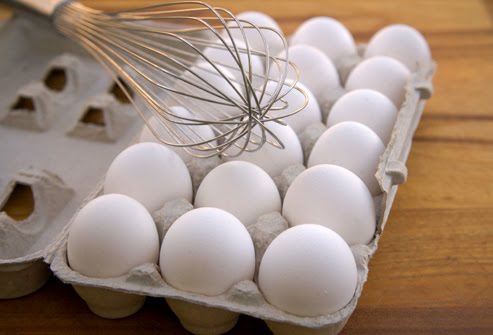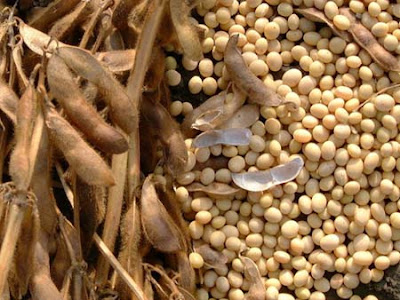In 1942, Dr. H. W. Bennetts dissected 21 cattle known to have died of "falling disease". This was the name given to the sudden, inexplicable death that struck herds of cattle in certain regions of Australia. Dr. Bennett believed the disease was linked to copper deficiency. He found that 19 of the 21 cattle had abnormal hearts, showing atrophy and abnormal connective tissue infiltration (fibrosis) of the heart muscle (
1).
In 1963, Dr. W. F. Coulson and colleagues found that 22 of 33 experimental copper-deficient pigs died of cardiovascular disease. 11 of 33 died of coronary heart disease, the quintessential modern human cardiovascular disease. Pigs on a severely copper-deficient diet showed weakened and ruptured arteries (aneurysms), while moderately deficient pigs "survived with scarred vessels but demonstrated a tendency toward premature atherosclerosis" including foam cell accumulation (
2). Also in 1963, Dr. C. R. Ball and colleagues published a paper describing blood clots in the heart and coronary arteries, heart muscle degeneration, ventricular calcification and early death in mice fed a lard-rich diet (
3).
This is where Dr. Leslie M. Klevay enters the story. Dr. Klevay suspected that Ball's mice had suffered from copper deficiency, and decided to test the hypothesis. He replicated Ball's experiment to the letter, using the same strain of mice and the same diet. Like Ball, he observed abnormal clotting in the heart, degeneration and enlargement of the heart muscle, and early death. He also showed by electrocardiogram that the hearts of the copper-deficient mice were often contracting abnormally (arrhythmia).
But then the
coup de grace: he prevented these symptoms by supplementing the drinking water of a second group of mice with copper (
4). In the words of Dr. Klevay: "copper was an antidote to fat intoxication" (
5). I believe this was his tongue-in-cheek way of saying that the symptoms had been misdiagnosed by Ball as due to dietary fat, when in fact they were due to a lack of copper.
Since this time, a number of papers have been published on the relationship between copper intake and cardiovascular disease in animals, including several showing that copper supplementation prevents atherosclerosis in one of the most commonly used animal models of cardiovascular disease (
6,
7,
8). Copper supplementation also corrects abnormal heart enlargement-- called hypertrophic cardiomyopathy-- and heart failure due to high blood pressure in mice (
9).
For more than three decades, Dr. Klevay has been a champion of the copper deficiency theory of cardiovascular disease. According to him, copper deficiency is the only single intervention that has caused the full spectrum of human cardiovascular disease in animals, including:
- Heart attacks (myocardial infarction)
- Blood clots in the coronary arteries and heart
- Fibrous atherosclerosis including smooth muscle proliferation
- Unstable blood vessel plaque
- Foam cell accumulation and fatty streaks
- Calcification of heart tissues
- Aneurysms (ruptured vessels)
- Abnormal electrocardiograms
- High cholesterol
- High blood pressure
If this theory is so important, why have most people never heard of it? I believe there are at least three reasons. The first is that the emergence of the copper deficiency theory coincided with the rise of the diet-heart hypothesis, whereby saturated fat causes heart attacks by raising blood cholesterol. Bolstered by some encouraging findings and zealous personalities, this theory took the Western medical world by storm, for decades dominating all other theories in the medical literature and public health efforts. My opinions on the diet-heart hypothesis aside, the two theories are not mutually exclusive.
The second reason you may not have heard of the theory is due to a lab assay called copper-mediated LDL oxidation. Researchers take LDL particles (from blood, the same ones the doctor measures as part of a cholesterol test) and expose them to a high concentration of copper in a test tube. Free copper ions are oxidants, and the researchers then measure the amount of time it takes the LDL to oxidize. I find this assay tiresome, because studies have shown that the amount of time it takes copper to oxidize LDL in a test tube doesn't predict how much oxidized LDL you'll actually find in the bloodstream of the person you took the LDL from (
10,
11).
In other words, it's an assay that has little bearing on real life. But researchers like it because for some odd reason, feeding a person saturated fat causes their LDL to be oxidized more rapidly by copper in a test tube, even though that's not the case in the actual bloodstream (
12). Guess which result got emphasized?
The fact that copper is such an efficient oxidant has led some researchers to propose that copper oxidizes LDL in human blood, and therefore dietary copper may contribute to heart disease (oxidized LDL is a central player in heart disease-- read more
here). The problem with this theory is that there are virtually zero free copper ions in human serum. Then there's the fact that supplementing humans with copper actually reduces the susceptibility of red blood cells to oxidation (by copper in a test tube, unfortunately), which is difficult to reconcile with the idea that dietary copper increases oxidative stress in the blood (
13).
The third reason you may never have heard of the theory is more problematic. Several studies have found that a higher level copper in the blood correlates with a higher risk of heart attack (
14,
15). At this point, I could hang up my hat, and declare the animal experiments irrelevant to humans. But let's dig deeper.
Nutrient status is sometimes a slippery thing to measure. As it turns out, serum copper isn't a good marker of copper status. In a 4-month trial of copper depletion in humans, blood copper stayed stable, while the activity of copper-dependent enzymes in the blood declined (
16). These include the important copper-dependent antioxidant, superoxide dismutase. As a side note, lysyl oxidase is another copper-dependent enzyme that cross-links the important structural proteins collagen and elastin in the artery wall, potentially explaining some of the vascular consequences of copper deficiency. Clotting factor VIII increased dramatically during copper depletion, perhaps predicting an increased tendency to clot. Even more troubling, three of the 12 women developed heart problems during the trial, which the authors felt was unusual:
We observed a significant increase over control values in the number of ventricular premature discharges (VPDs) in three women after 21, 63, and 91 d of consuming the low-copper diet; one was subsequently diagnosed as having a second-degree heart block.
In another human copper restriction trial, 11 weeks of modest copper restriction coincided with heart trouble in 4 out of 23 subjects, including one heart attack (
17):
In the history of conducting numerous human studies at the Beltsville Human Nutrition Research Center involving participation by 337 subjects, there had previously been no instances of any health problem related to heart function. During the 11 wk of the present study in which the copper density of the diets fed the subjects was reduced from the pretest level of 0.57 mg/ 1000 kcal to 0.36 mg/1000 kcal, 4 out of 23 subjects were diagnosed as having heart-related abnormalities.
The other reason to be skeptical of the association between blood copper and heart attack risk is that inflammation increases copper in the blood (
18,
19). Blood copper level correlates strongly with the marker of inflammation C-reactive protein (CRP) in humans, yet substantially increasing copper intake doesn't increase CRP (
20,
21). This suggests that elevated blood copper is likely a symptom of inflammation, rather than its cause, and presents an explanation for the association between blood copper level and heart attack risk.
Only a few studies have looked at the relationship between more accurate markers of copper status and cardiovascular disease in humans. Leukocyte copper status, a marker of tissue status, is lower in people with cardiovascular disease (
22,
23). People who die of heart attacks generally have less copper in their hearts than people who die of other causes, although this could be an effect rather than a cause of the heart attack (
24). Overall, I find the human data lacking. I'd like to see more studies examining liver copper status in relation to cardiovascular disease, as the liver is the main storage organ for copper.
According to a 2001 study, the majority of Americans may have copper intakes below the USDA recommended daily allowance (
25), many substantially so. This problem is exacerbated by the fact that copper levels in food have declined in industrial nations over the course of the 20th century, something I'll discuss in the next post.







